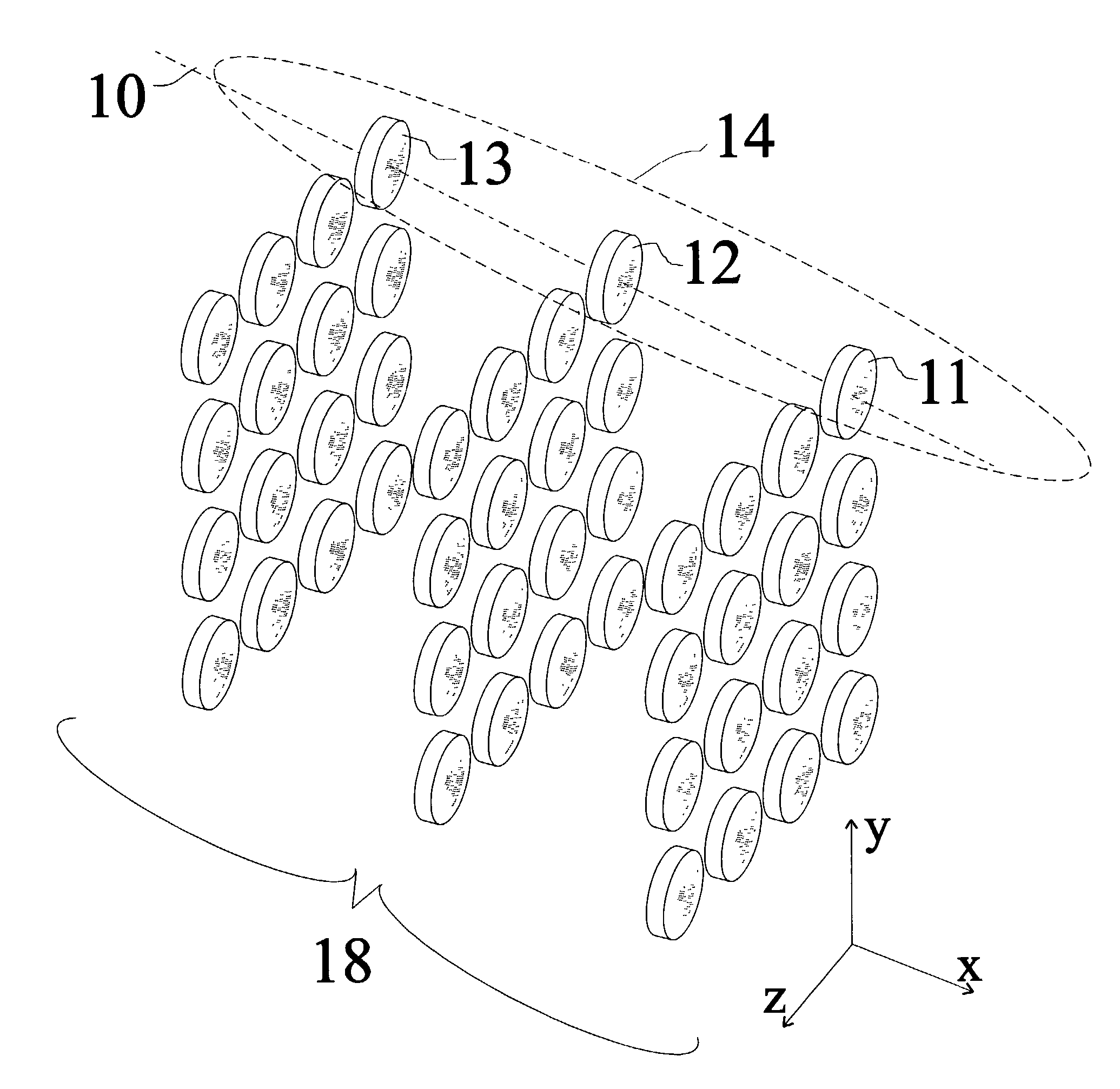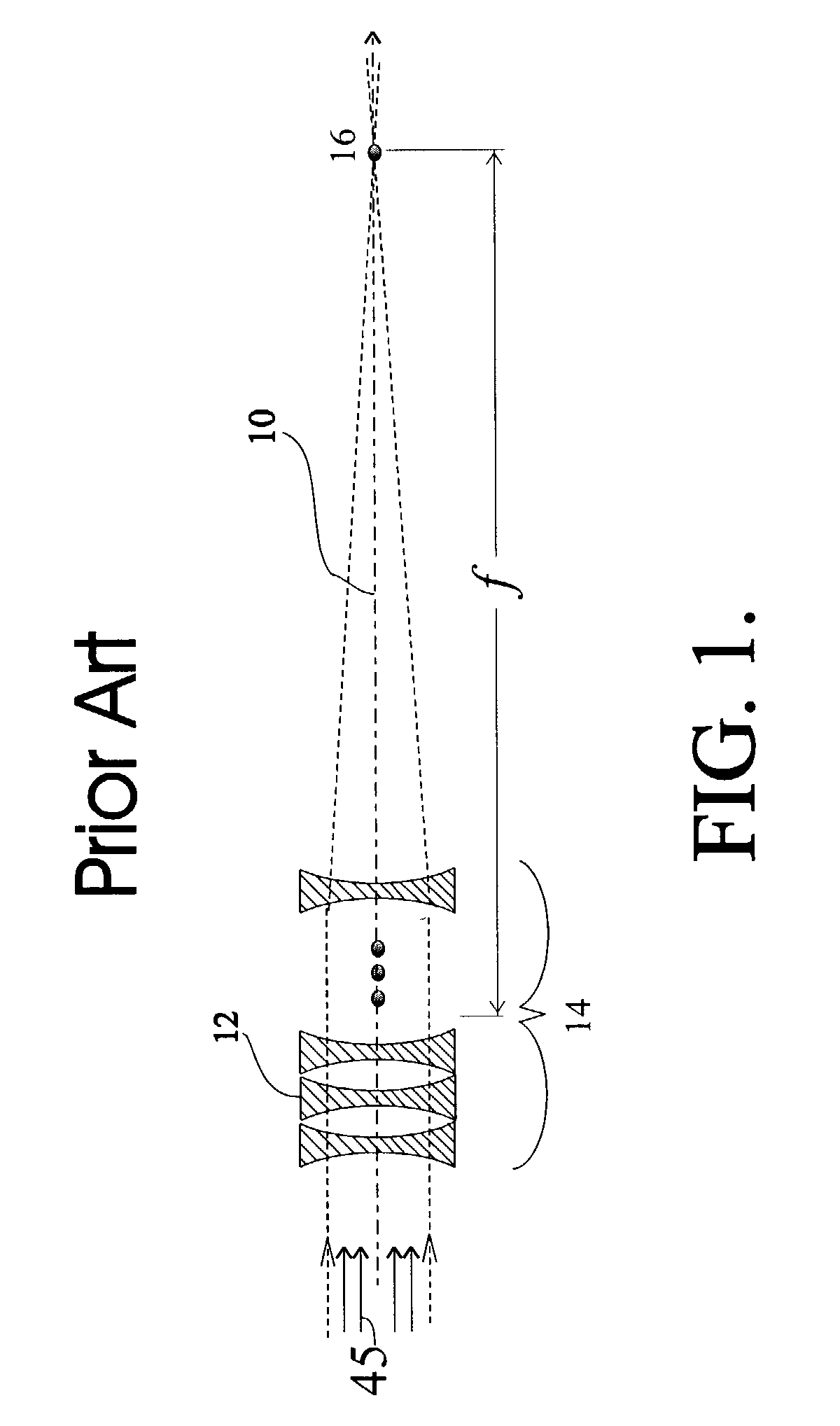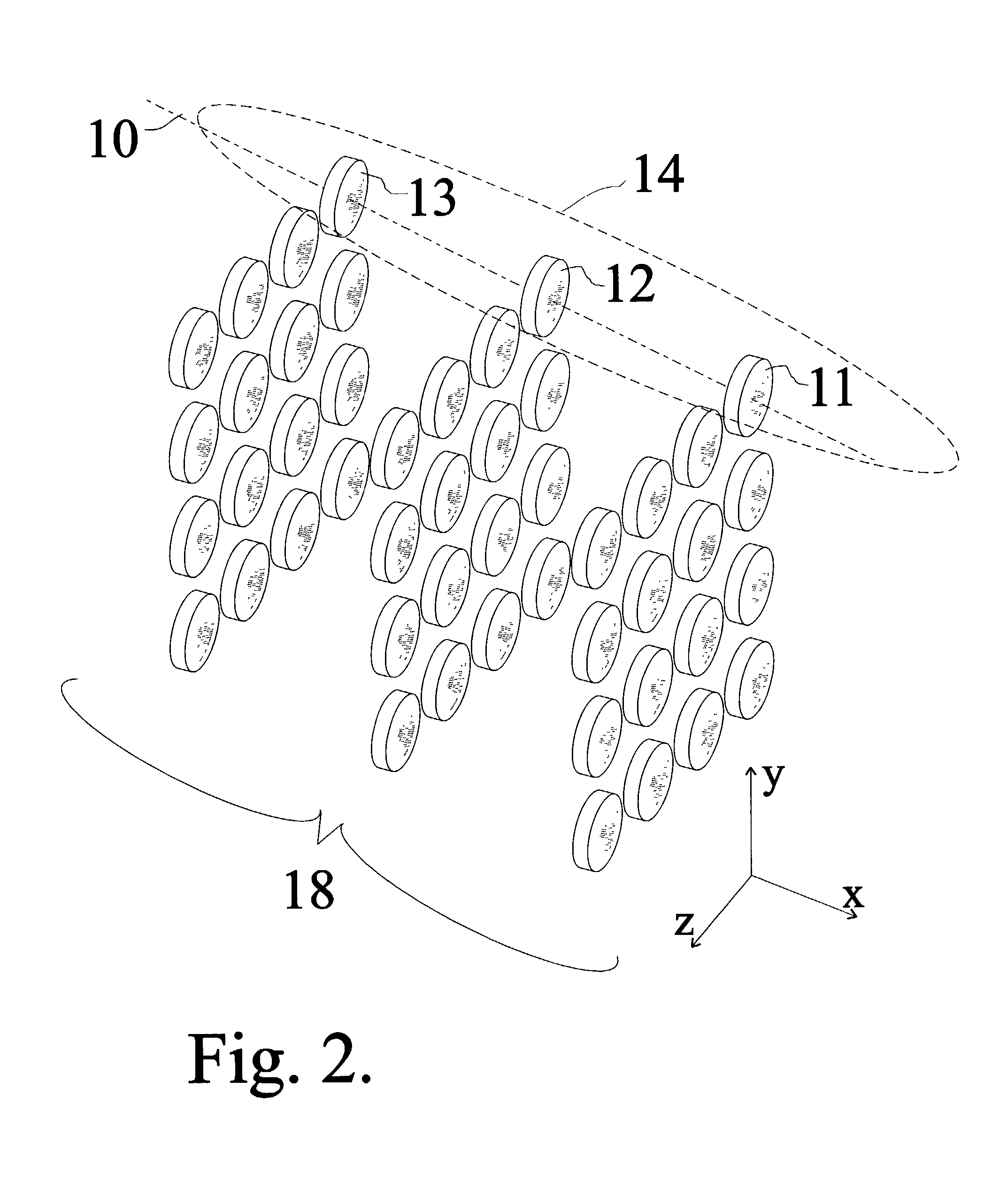X-ray and neutron imaging
a technology of x-ray and neutron, applied in the field of x-ray or neutron imaging of objects, can solve the problems of limited aperture small apertures of compound refractive lenses, and limited ability
- Summary
- Abstract
- Description
- Claims
- Application Information
AI Technical Summary
Benefits of technology
Problems solved by technology
Method used
Image
Examples
Embodiment Construction
1. Three-dimensional (3-D) Lens Array
[0040]To increase the area of collection and imaging, 3-D arrays of unit lenses are used. FIG. 2 shows a partial solution and a fundamental component: the three dimensional (3-D) array of unit lenses. Arrays of concave unit lenses are aligned in rows and columns. The unit lenses 11, 12, and 13 are aligned so that the optical axis 10 of each is coaxial with succeeding unit convex lenses, forming a compound refractive lens 14. Identical compound refractive lenses are repeated in the y and z directions forming a 3-D lens array 18. Each compound refractive lens is capable of transporting x-rays or neutrons for collection, collimation, or imaging. The total number of unit lenses Nt is given by product of Nx, Ny and Nz, where Nx is the number of unit lenses in the x-direction, Ny is the number in y-direction, and Nz is the number in the z direction. Thus, Nt=NxNyNz.
[0041]A single 3-D array can be used for collection of x-ray or neutrons. Such an array ...
PUM
 Login to View More
Login to View More Abstract
Description
Claims
Application Information
 Login to View More
Login to View More - R&D
- Intellectual Property
- Life Sciences
- Materials
- Tech Scout
- Unparalleled Data Quality
- Higher Quality Content
- 60% Fewer Hallucinations
Browse by: Latest US Patents, China's latest patents, Technical Efficacy Thesaurus, Application Domain, Technology Topic, Popular Technical Reports.
© 2025 PatSnap. All rights reserved.Legal|Privacy policy|Modern Slavery Act Transparency Statement|Sitemap|About US| Contact US: help@patsnap.com



